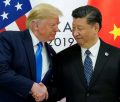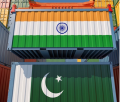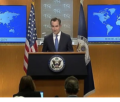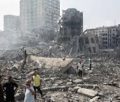What Would “Total Victory” Mean in Gaza?

Victory and decision are one and the same. Over the years, attempts have been made to distinguish between them: for example, victory is tactical and decision is operational or strategic; or victory is the result and decision is the process. The word “victory” is more popular than the more professional word “decision,” but the two concepts overlap. The words used depend on the user’s needs and image.
Decision/victory is one of four elements of Israeli national security doctrine (along with early warning, deterrence and defense), but in fact it is the most important, because it is the only optimal outcome of a military campaign. In the last three decades, ever since Operation Accountability against Hezbollah in 1993, the theoretical discussion about the use of force in military operations has gone awry: deterrence has become the desired outcome of a military campaign, while decision/victory has essentially disappeared as the primary goal.
This pushing aside of victory and centralization of deterrence was largely due to the limitations the State of Israel and the IDF placed on themselves regarding the use of force. The goals of these limitations were to reduce casualties among IDF soldiers and avoid ground maneuvering as much as possible; reduce civilian losses as a result of missiles and rockets hitting the home front; rely on active defense to postpone a long-term solution to challenges; reduce enemy collateral damage by avoiding warfighting within dense urban spaces; reduce international criticism of Israel over its military conduct; resist holding onto territories that are not part of the State of Israel (a lesson from the long stay in Lebanon); avoid the need to provide a civil response to the needs of a local enemy population and to incur the cost in terms of resources and attention that such an effort would entail; and more. The IDF’s use of the term “victory” in recent years has not been aimed at victory/decision, which will be defined below, but at a significant improvement of deterrence.
Israel’s belief that it can rely on intermittent deterrence operations (“rounds”) and does not need a victory/decision was painfully shattered on October 7, 2023. It took a severe blow to national security to force a review of the security doctrine and a rediscovery of the concept of victory/decision. While it was quickly understood that victory/decision is required in the current campaign and probably also in future campaigns, the need arose to define what a “victory” is.
Victory occurs at each of the four levels of national security: tactics, operations, military strategy and national strategy (or Grand Strategy).
Tactical victory is the ability of IDF units to annihilate enemy forces in battle and control territory in a way that negates the enemy’s ability to continue to fight in that area in a military framework. This kind of victory is the achievement toward which fighting is directed. This is not about the killing of all opposing military soldiers or terrorist operatives, but about breaking their ability to fight as an organization or a combatant framework. A tactical victory is a military action that is a means to achieving broader goals. It does not mean that all threats to our forces or to the home front have disappeared from the area in which the victory was achieved.
Operational victory is the ability of the IDF’s operative echelon, usually the regional command operating in the operational arena or front, to dismantle the fighting system facing it. In a cluster of battles (usually many dozens are required) in which tactical victories and control of terrain are achieved, the combined fighting force of the IDF manages to render the enemy’s military system dysfunctional – i.e., unable to achieve military strategic goals or to deny the IDF’s ability to achieve such goals. The operational victory achieved in the Six-Day War forced Egypt and Syria into a military reconstruction process that led them to embark on another war – with improved opening conditions for a military surprise – six years later. In the current war, operational victory does not mean the threat of guerrilla warfare and terrorism has been removed from the Gaza Strip, but that Hamas’s ability to cause damage, especially to the Israeli civilian home front, is declining dramatically. It can be said that in most areas of the Gaza Strip, the IDF has already achieved an operational victory. Its completion depends on Israel’s decision to fight in the limited remaining areas (Rafah, some of the center camps).
Strategic victory is the removal of the enemy’s ability to pose a military threat in the operational arena for many years to come. This kind of victory is achieved by continuing military operations after the operational victory is achieved in order to weaken the enemy’s guerrilla warfare and terrorism capabilities until they either stop completely or are reduced to the scale of individual events. Strategic victory requires fundamental changes in the situation on the ground: the loss by guerrilla and terrorist operatives of the support of their population; isolation of the arena to prevent the insertion of new weapons and funding in a way that could allow guerrilla and terrorist operatives to recover; and a distancing of junior operatives or supporters from leading terrorist operatives that significantly impairs those leaders’ ability to command their juniors.
Such a change in the situation on the ground requires steps that go beyond military combat. These include rehabilitating the economic and civilian infrastructure for the population that is not engaged in terrorism; gaining the consent of neighboring countries and other partners to block weapons smuggling routes and money transfer channels into the territory; and the regulation of local government such that it can satisfy and develop the civilian and economic needs of the population. Such a strategic victory was achieved in 2004 at the end of the second intifada, and it resulted in relative quiet for about a decade.
The Grand Strategy victory, or victory on the level of national security strategy, is when a military victory leads to a fundamental change in the strategic posture of the State of Israel. This can stem from a desire among enemy leadership to fundamentally change its hostile attitude toward Israel and sign peace agreements with it that end the military conflict. Such a great victory – some would call it a mutual victory – was achieved with Egypt about five years after the Yom Kippur War.
Another type of grand victory is a situation in which the IDF controls territory following a military victory, and the failure of the previous regime in the war leads to regime change of a kind that creates fundamentally different national conduct. The classic historical examples of such a change are Germany and Japan after World War II. Israel won this kind of victory in the Golan Heights when it applied sovereignty over the territory in 1981.
Another form of grand victory stems from the complete dissolution of terrorist elements and the integration of their political movement into national mechanisms, as occurred in Malaya (part of Malaysia) in the 1950s and with the Tamil rebels in Sri Lanka in 2009.
Grand victory cannot be achieved only by military means. It requires dialogue with local forces, deep and ongoing economic and civil rehabilitation, and permanent security control and policing mechanisms that create law and order and are acceptable to the population.
So what would “total victory” mean in the current Gaza conflict?
Tactical victory alone, as it is defined above, cannot lead to total victory.
Nor can an operational victory be “total”. While such a victory does mean a fundamental weakening of the enemy’s military capacity to do harm, it will, over time, be able to continue to fight guerrilla or terror warfare. The State of Israel strives to return all residents to the Gaza envelope region and create a situation of “absolute” security for them. This goal cannot be fulfilled solely by an operational victory.
Grand victory in Gaza would mean a years’ long process until the creation of fundamental change. During that period, the IDF would continue to eliminate guerrilla and terrorist operatives until they are completely subdued. A civilian authority would be established with an effective police force and the capacity for civil, economic and law enforcement governance. The population would implement a basic approach of coexistence with Israel. Actions taken by the civilian authority toward this end, and its delicate coordination with Israel’s military activity, would receive international and regional support.
Such a process does not yet appear practical or feasible in Gaza, and even if it were, it is highly complex. It will be even more complex to connect Gaza to the civil and political processes in the West Bank and ultimately to a political peace agreement that would lead to the establishment of a single Palestinian state entity in both areas simultaneously.
In light of all this, it seems that “total victory” in the Gaza conflict is most likely to come in the form of a strategic victory. This means the Israeli military will continue to fight guerrilla and terrorist operatives in the Strip alongside extensive activity by a local civilian government with an effective police force and international and regional economic and civil backing. This should lead in the coming years to the stabilization of the Gaza Strip without Hamas control over it.
In such a scenario, it will be possible to ensure relative quiet for a decade or more. However, it will not be possible to ensure quiet beyond that, since the absence of a fundamental change in the situation on the ground is likely to lead to a long-term erosion of security quiet and the re-creation of challenges to Israel. This is what happened in the West Bank after a decade of relative quiet, and in relatively stable Iraq after the withdrawal of the United States at the end of 2011. (Courtesy: BESA centre)
by Col. (Res.) Shay Shabtai
The writer is a senior researcher at the Begin- Sadat Centre for Strategic Studies (BESA)
-
Book Shelf
-
 Book Review
DESTINY OF A DYSFUNCTIONAL NUCLEAR STATE
Book Review
DESTINY OF A DYSFUNCTIONAL NUCLEAR STATE
- Book ReviewChina FO Presser Where is the fountainhead of jihad?
- Book ReviewNews Pak Syndrome bedevils Indo-Bangla ties
- Book Review Understanding Vedic Equality….: Book Review
- Book Review Buddhism Made Easy: Book Review
- Book ReviewNews Elegant Summary Of Krishnamurti’s teachings
- Book Review Review: Perspectives: The Timeless Way of Wisdom
- Book ReviewNews Rituals too a world of Rhythm
- Book Review Marx After Marxism
- Book Review John Updike’s Terrorist – a review
-
-
Recent Top Post
- NewsTop Story Record Pentagon spending bill and America’s hidden nuclear rearmament
-
 NewsTop Story
Taliban Suffers Devastating Blow With Killing Of Minister
NewsTop Story
Taliban Suffers Devastating Blow With Killing Of Minister
-
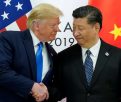 China NewsCommentaries
Reality Shadow over Sino-American ties
China NewsCommentaries
Reality Shadow over Sino-American ties
-
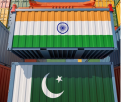 CommentariesNews
Ides of trade between India and Pakistan
CommentariesNews
Ides of trade between India and Pakistan
-
 CommentariesTop Story
Palestinians at the cross- roads
CommentariesTop Story
Palestinians at the cross- roads
-
 CommentariesTop Story
While Modi professes concern for the jobless, “his government’s budget escalates class war”
CommentariesTop Story
While Modi professes concern for the jobless, “his government’s budget escalates class war”
-
 CommentariesNews
Politics of Mayhem: Narrative Slipping from Modi ….?
CommentariesNews
Politics of Mayhem: Narrative Slipping from Modi ….?
-
 Commentaries
Impasse over BRI Projects in Nepal
Commentaries
Impasse over BRI Projects in Nepal
-
 CommentariesNews
Yet another Musical Chairs in Kathmandu
CommentariesNews
Yet another Musical Chairs in Kathmandu
-
 CommentariesTop Story
Spurt in Anti-India Activities in Canada
CommentariesTop Story
Spurt in Anti-India Activities in Canada
AdSense code




